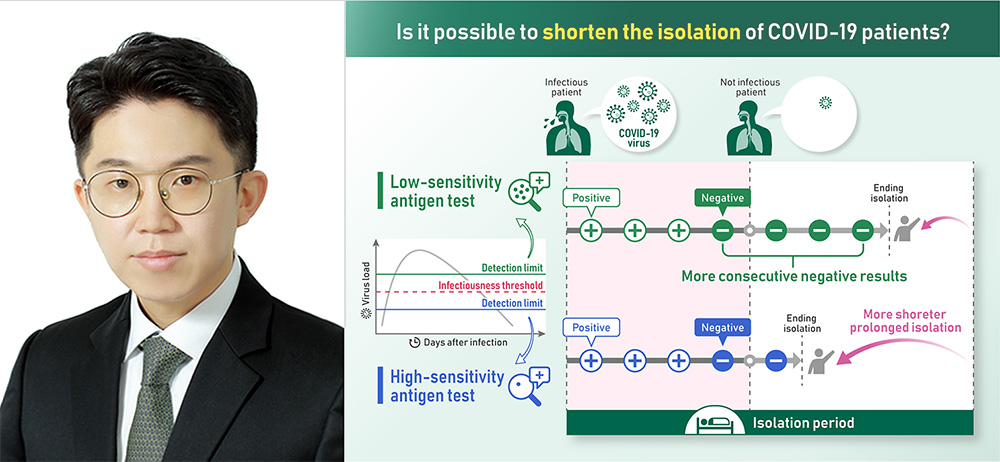연구/산학
PKNU Research 1000
| Kim Gwang-Soo | published in <Nature Communications> | |||
| 작성자 | 대외협력과 | 작성일 | 2022-12-02 |
| 조회수 | 818 | ||
| Kim Gwang-Soo | published in <Nature Communications> | |||||
 |
대외협력과 |  |
2022-12-02 |  |
818 |
“Calculate the appropriate quarantine period for the corona infected person based on the rapid antigen test result”
Professor Kim Gwang-Soo

While the discussion on the quarantine period for a person infected with COVID-19 continues, a study result from Pukyong National University that can calculate the quarantine period that can minimize the burden on the infected and the risk of infection is attracting academia attention.
In Korea and other countries, people infected with COVID-19 are usually isolated for a certain period (5 to 10 days) after being confirmed, and individual may lose their infectivity before the quarantine period, or vice versa, remain infective. Therefore, criteria for determining an appropriate quarantine period have been required.
Professor Kim Gwang-Soo (department of scientific computing) from Pukyong National University conducted a joint study with researchers Jeong Yong-Dam (ph.d. program in the department of mathematics), professor Jeong Yil-Hyo (department of mathematics) from Pusan national university, and researchers at Nagoya university in Japan and Indiana university in the US. The results of a study on the design of quarantine guidelines for COVID-19 infected people using the rapid antigen test results were presented.
Professor Kim said, “It is possible to reduce the burden on the infected person while reducing the risk of infection if the quarantine termination conditions are well designed using the antigen test results to determine the quarantine period,” suggesting rather than isolating the infected for a fixed period, isolating them until the viral load falls below a threshold is suggested to reduce the burden on the infected.
The joint research team conducted antigen testing under various conditions, such as testing interval and number of negative confirmations through computer simulation and calculated the risk of an infected person holding infectivity at the end of the quarantine and the duration of quarantine even after losing infectivity.
According to the study, both risk and burden can be reduced by designing quarantine termination conditions based on the antigen test detection limit. If the threshold of antigen detection is higher than that of infectivity under the same level of risk control, multiple negative tests are required, conversely, if it is below the infectivity threshold, the quarantine period can be shortened by reducing the number of confirmations.
Professor Kim Gwang-Soo of Pukyong National University recently published the paper ‘Designing isolation guidelines for COVID-19 patients with rapid antigen tests’ containing the results of this study as a co-first author in the international academic journal <Nature Communications>.